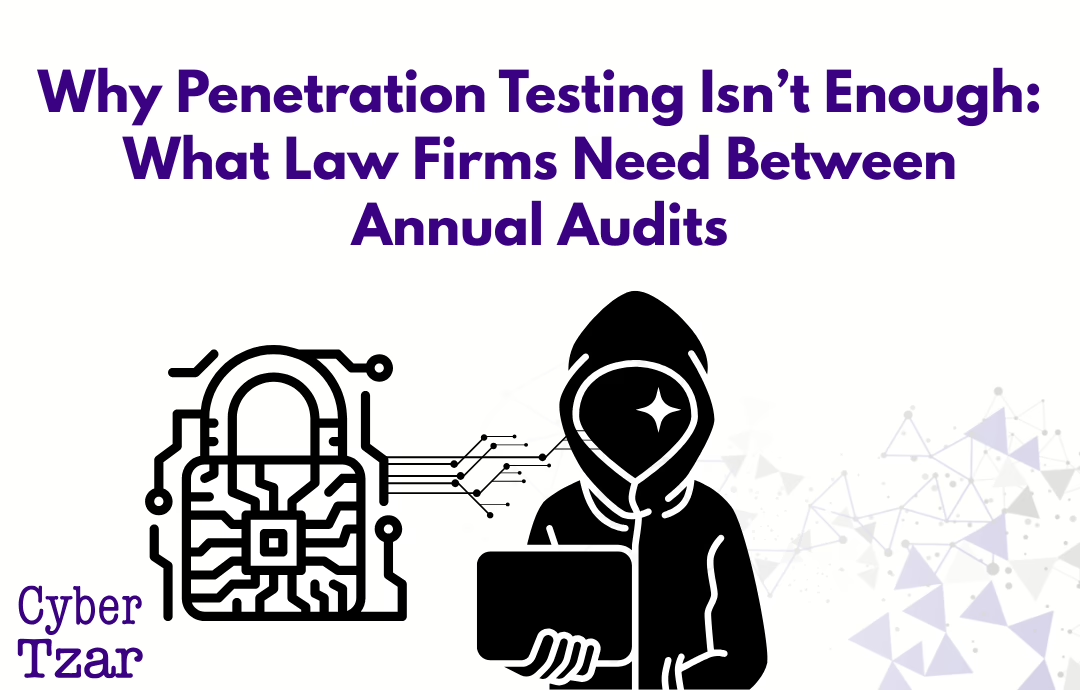From Cyber Tzar – Cyber Risk Intelligence, Built for Law Firms
The legal profession is under increasing pressure to demonstrate cybersecurity resilience. But while firewalls and staff training are now table stakes, many law firms still carry silent, serious vulnerabilities — risks that aren’t obvious until it’s too late.
Here are five of the most commonly overlooked vulnerabilities in law firms, why they matter, and how Cyber Tzar helps detect and prioritise them before they become breaches.
1. Unpatched Public-Facing Services
Examples: Client portals, email logins, remote desktop, old CMS installs
Even firms with outsourced IT support often miss critical updates to:
-
Outlook Web Access
-
Remote desktop (RDP)
-
WordPress or CMS plugins for blog pages
-
Old document management tools left active but forgotten
Risk:
These are high-priority targets for attackers using known exploits and scanners. They can lead directly to credential theft or full compromise.
How Cyber Tzar Helps:
-
Continuous scanning of your internet-facing assets
-
Alerts for unpatched services and known CVEs
-
Prioritised fix list based on business context (e.g., data access level)
2. Misconfigured SSL / TLS and Encryption Settings
Examples: Expired certificates, weak ciphers, missing HTTPS enforcement
Encryption errors are often seen as “technical detail” — until they expose sensitive client data in transit.
Risk:
Even a properly encrypted login page may still allow fallback to insecure connections or have certificates that don’t validate correctly — exposing credentials or client uploads.
How Cyber Tzar Helps:
-
Detects weak or misconfigured encryption on web services
-
Flags services using deprecated protocols (e.g., TLS 1.0)
-
Offers clear, actionable recommendations for IT teams
3. Forgotten Subdomains and Staging Environments
Examples: test.myclientsite.com, dev.docs.myfirm.co.uk
Many firms migrate systems or redesign websites — but leave old staging servers, backups, or test platforms live.
Risk:
These often lack basic protections and can expose client information, admin interfaces, or application vulnerabilities.
How Cyber Tzar Helps:
-
Maps and monitors your full domain and subdomain footprint
-
Flags unknown or shadow services
-
Prioritises exposed systems with sensitive interfaces (e.g., admin panels, open directories)
4. Third-Party Scripts and Integrations
Examples: Legal CRMs, chatbots, analytics tools, remote calendaring
JavaScript integrations and third-party plugins are everywhere — often added by marketing or support teams without proper security review.
Risk:
Malicious or compromised third-party code can skim data, inject malware, or hijack session tokens without triggering internal alarms.
How Cyber Tzar Helps:
-
Identifies active third-party scripts in use across your web assets
-
Flags known-bad or deprecated libraries
-
Maps supply chain risk across your digital infrastructure
5. Exposure via Forgotten or Low-Priority Domains
Examples: oldbrandname.com, merger-firmname.co.uk, legacy email domains
Law firms involved in mergers, rebrands, or platform migrations often maintain old domains without monitoring them closely.
Risk:
Attackers can exploit forgotten DNS records, expired email security settings, or unmaintained websites to spoof, phish, or pivot into live systems.
How Cyber Tzar Helps:
-
Full domain inventory and exposure scan
-
Flags SPF, DKIM, and DMARC misconfigurations
-
Highlights any internet-facing services still live on old domains
✅ Your Next Step: See What You’re Missing
These vulnerabilities aren’t visible from an internal checklist or annual pen test. You need external, continuous insight — the kind that updates daily and is tailored to your real-world risks.
Cyber Tzar gives law firms:
-
Live threat scanning
-
Business-context prioritisation
-
Dashboards for compliance, remediation, and insurer evidence
🔐 Request your Cyber Risk Snapshot today at cybertzar.com
📩 Or get in touch: info@cybertzar.com
Cyber Tzar – Because You Can’t Secure What You Can’t See.



